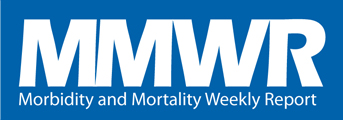MMWR News Synopsis for May 25, 2017
Deaths from Alzheimer’s Disease — United States, 1999–2014
CDC Media Relations
404-639-3286
Rates of Alzheimer’s disease-related deaths are expected to continue to increase reflecting our nation’s aging population and increasing life expectancy. While there is currently no cure for Alzheimer’s disease, people should see a doctor if they experience symptoms of Alzheimer’s disease such as memory loss affecting their daily life, difficulties with problem solving, or misplacing objects. Early diagnosis is important as it allows patients and their families to begin planning for the caregiving patients need at all stages. These findings also highlight the growing need for in-home care and the need to provide education, respite care, and case management services to caregivers. Between 1999 and 2014, death rates from Alzheimer’s disease, a fatal form of dementia, increased 54.5 % in adults for all races in the U.S. Alzheimer’s disease affects the ability to live independently, and people with the disease often become entirely dependent on caregivers until their death. The report finds that from 1999 to 2014, Alzheimer’s death rates in medical facilities and nursing homes declined from 14.7% to 6.6% while the rate of Alzheimer’s deaths at home increased from 13.9% to 24.9%. The data are based on U.S. mortality records.
Prevalence of Arthritis and Arthritis-Attributable Activity Limitation by Urban-Rural County Classification — United States, 2015
CDC Media Relations
404-639-3286
Adults living in rural areas have a significantly higher prevalence of arthritis and associated activity limitations compared with adults living in more urban areas. Rural areas may have a greater need for broader dissemination of evidence-based physical-activity and chronic-disease management programs to reduce the impact of arthritis. CDC analyzed data from the 2015 Behavioral Risk Factor Surveillance System by urban-rural categories. The unadjusted prevalence of arthritis was 31.8% in the most rural areas and 20.5% in the most urban. The unadjusted arthritis-attributable activity limitation (AAAL) prevalence among adults with arthritis was 55.3% in the most rural areas and 49.7% in the most urban. Arthritis is one of the most prevalent health conditions (54 million Americans), and 23.7 million people report AAAL. Rural populations in the U.S. have well-documented health disparities including higher prevalence of chronic health conditions; however, before this report, little was known about the prevalence of arthritis and AAAL across urban-rural areas. More use of evidence-based interventions including physical activity and self-management education may be needed in rural areas to reduce the impact of arthritis and AAAL.
Current Tobacco Smoking and Desire to Quit Smoking Among Students Aged 13–15 Years — Global Youth Tobacco Survey, 61 Countries, 2012 and 2015
CDC Media Relations
404-639-3286
To reduce tobacco initiation and use by young people, countries can implement the World Health Organization’s MPOWER package, a set of evidence-based interventions. These interventions include monitoring tobacco use and prevention policies; protecting people from tobacco smoke; offering help to quit tobacco use; warning about the dangers of tobacco use; enforcing bans on tobacco sponsorship, promotion, and advertising; and raising taxes on tobacco. When implemented as part of a comprehensive approach, these strategies can help reduce youth tobacco use. CDC analyzed Global Youth Tobacco Survey (GYTS) data from 61 countries across the six World Health Organization regions to examine the prevalence of current tobacco smoking and desire to quit smoking among students ages 13–15 years. The survey found that median current tobacco smoking prevalence among the 61 countries was 10.7% overall; By sex, it was 14.6% among males and 7.5% among females. In 38 of the 61 countries, tobacco smoking prevalence was significantly higher among males than females. In 40 of the 51 countries that collected data about the desire to quit smoking, the proportion of youth who desired to quit exceeded 50%.
Virologic Monitoring of Poliovirus Type 2 After Oral Polio Vaccine Withdrawal — Worldwide, 2016–2017
Dr. Ousmane M. Diop
Office: +41 22 79 12503
Cell phone: +41 79 500 2094
Email address: diopo@who.int
An important public health milestone was laid with the globally synchronized withdrawal and virologic monitoring of a live viral vaccine (Oral Polio Vaccine type 2, or OPV2) used to eradicate the homologous pathogen (wild poliovirus type 2). In April 2016, 155 countries synchronized withdrawal of OPV2. To confirm the success of this important global public health milestone, it is important to ensure that effective global virologic monitoring mechanisms are in place. This paper describe how poliovirus type 2 (PV2) was tracked and detected worldwide in both human populations and in the environment using acute flaccid paralysis and environmental surveillance systems. The Global Polio Laboratory Network, which comprises 146 laboratories in 92 countries, worked closely with field surveillance officers to quickly detect and report PV2 to the Global Polio Eradication Initiative (GPEI). This unprecedented work allowed the GPEI to identify unplanned use of PV2-containing vaccines in some countries and propose adequate solutions.
Notes from the Field:
- Measles Outbreak at a United States Immigration and Customs Enforcement Facility ― Arizona, May–June 2016
Quick Stats:
- Percentage of Adults Aged ≥18 Years Who Walked as a Method of Transportation, by Location of Residence — National Health Interview Survey, United States, 2005, 2010, and 2015
###
U.S. DEPARTMENT OF HEALTH AND HUMAN SERVICES
CDC works 24/7 protecting America’s health, safety, and security. Whether diseases start at home or abroad, are curable or preventable, chronic or acute, stem from human error or deliberate attack, CDC is committed to respond to America’s most pressing health challenges.

